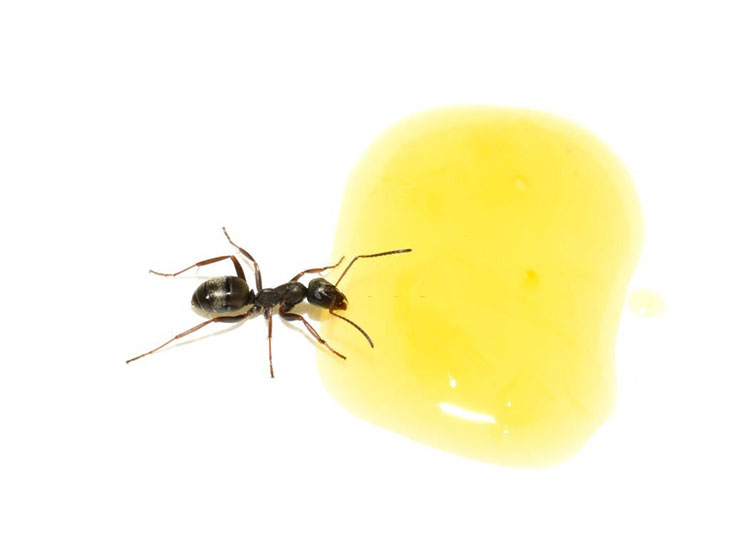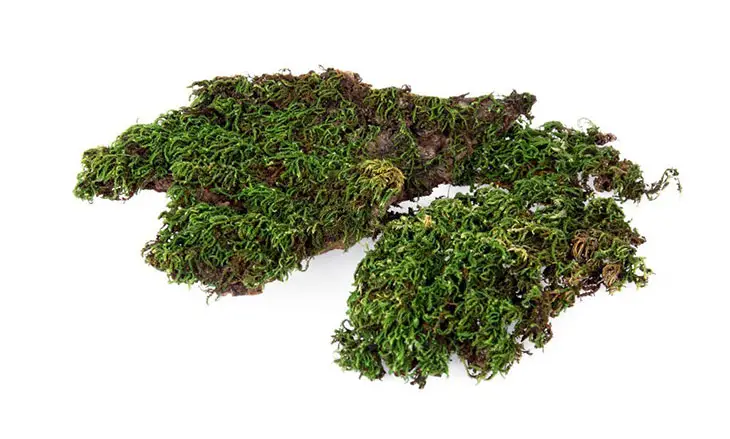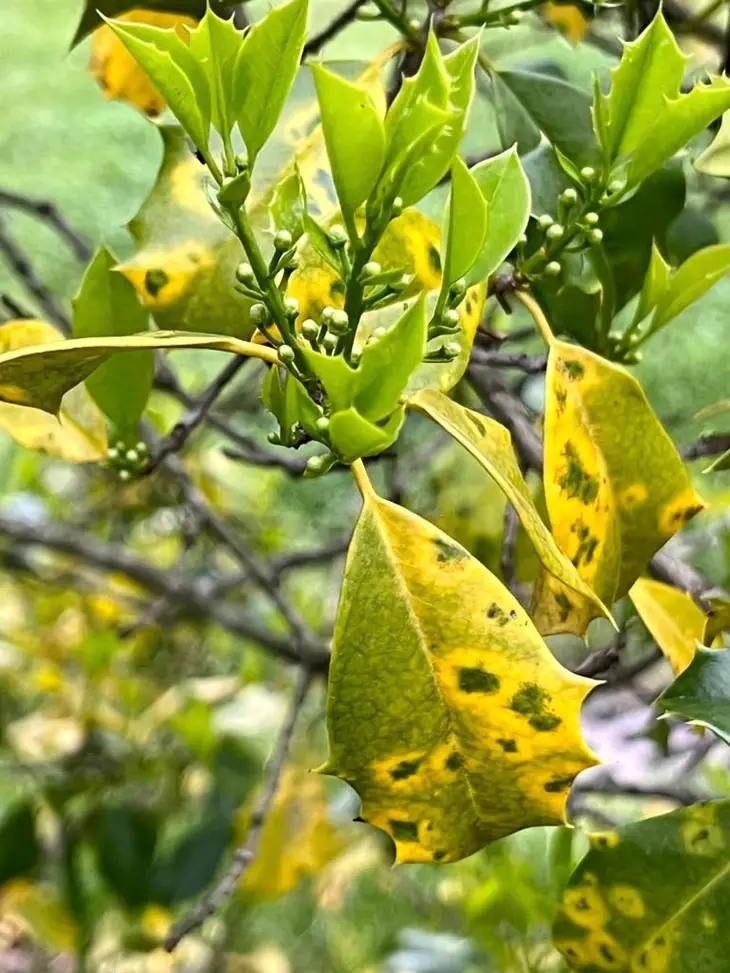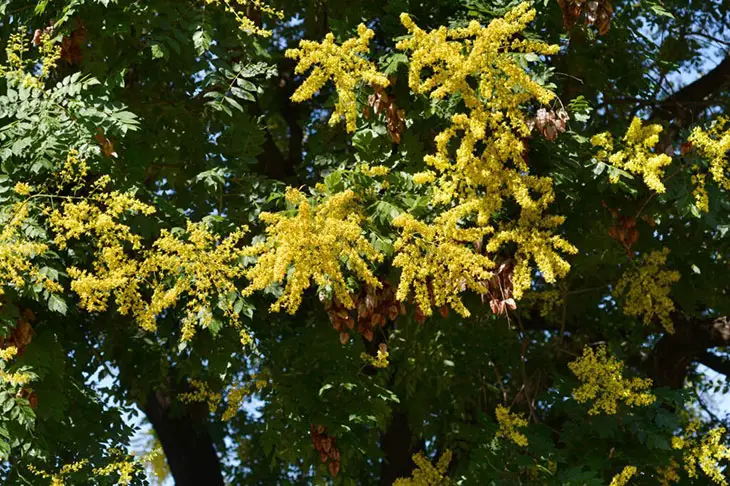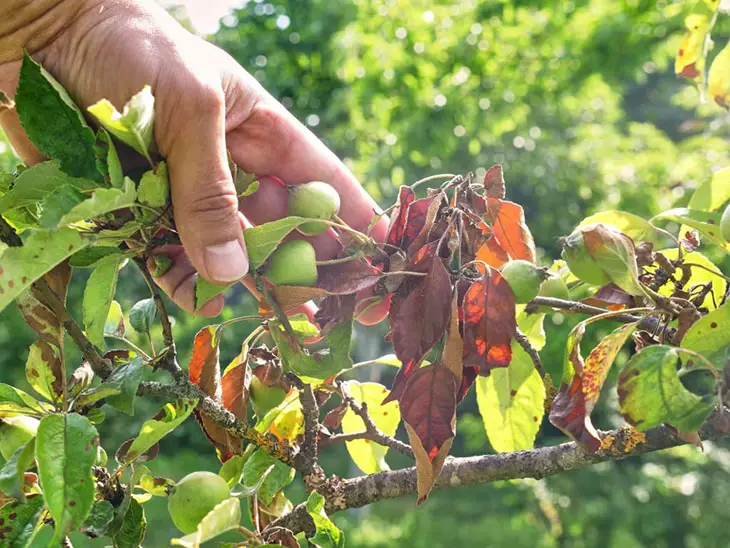
Caterpillars threaten almost all plantations, including apple and other fruit trees, because they can eat and destroy their foliage and fruits.
This article will help you know more about caterpillars on apple trees by showing how harmful they are to the plant.
Of course, I also equip you with thorough insights into eliminating this threat via four main methods. What are you waiting for? Let’s scroll the article down for further details.
What Are Caterpillars On Apple Trees?
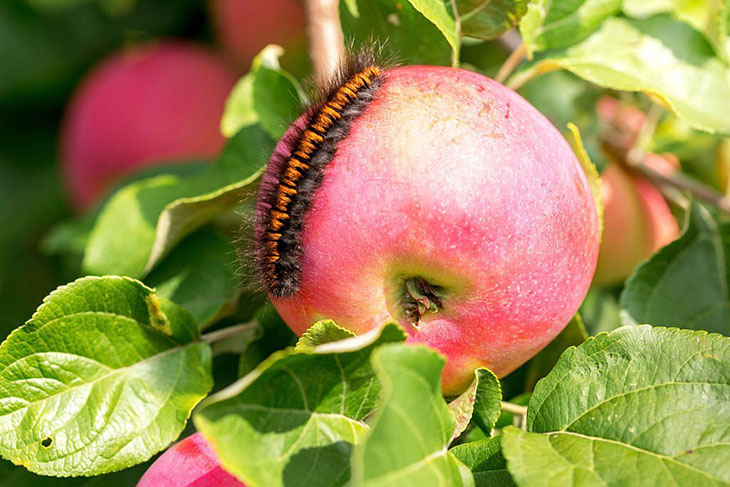
There are two common types of apple caterpillars that you should know: Eastern tent and forest tent caterpillars.
This insect is not beneficial, especially for an apple tree, because it slides on the foliage and creates several holes on its surface.
Here is more information about these two kinds for you to consider.
Eastern Tent Caterpillar
This species often feeds on apples, chokecherries, and dwarf crabapple trees. Its best hatching time occurs when the foliage starts to break the bud and will continue to feed for six to eight weeks.
You can easily notice it via its blue brown hairs and a creamy-white stripe flowing down the middle of its back. The damage it renders to leaves is conspicuous, as it can consume the entire leaf.
Forest Tent Caterpillar
The apple tree, particularly Wolf River variety – one of the largest apple species – is also the favorite food for forest tent caterpillars, which begin to hatch in early May and continue to feed on foliage for about six weeks.
Unlike the eastern tent species, the forest tent type has blue and black colors on its surface, and some white dots are marked on its back.
What Are The Common Apple Tree Problems Caused By Caterpillars?
Following are some main issues that an apple caterpillar induces.
Apple Scab
Caterpillars often feed on an apple fruit, resulting in the problem of apple scab. It is detected via some brown or olive-green spots on the tree’s trunk and leaves.
After a time, they will dry out before turning dark brown.
In the worst situations, some even stop growing and become bumpy due to damaged tissues. They eventually fall to the ground.
The best solution is to remove infected leaves from the tree instantly after you notice or spray special treatment on the apple plant.
Powdery Mildew
Powdery mildew is more serious than apple scab, which could lead to a complete failure of an apple harvest.
The primary symptom of this disease lies in a white coating on the branches with fluffy and creamy spots.
The leaves also show many net-like cracks, and their development is halted.
Suppose your apple tree shows these signs of severe infestations, prune the infected parts immediately but keep the crown alone.
Another approach is to use an approved product for plant protection. It would be best to steer clear of pesticides if the problem doesn’t turn worse.
Fire Blight
Fire blight is often rendered by a bacterium called Erwinia Amylovora. And the caterpillar often carries and facilitates its transmission into the apple leaves via the bites.
When your apple tree is prone to fire blight, its foliage seems to dry greatly and doesn’t show any signs of life.
The blossoms and young shoots are mostly affected, all turning dark brown as if they are burned in the wildfire.
How To Control The Caterpillars In Apple Trees?
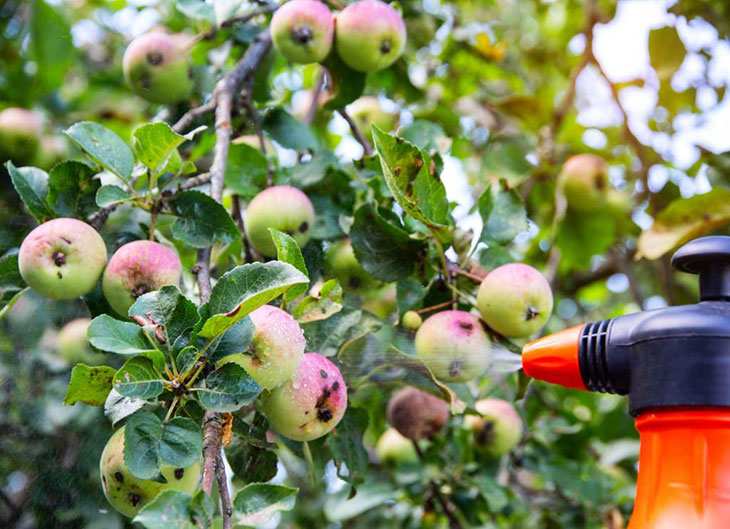
You should pay close attention to the below viable remedies to manage the growth of caterpillars on an apple plant.
Precautionary Measures
Prevention is always better than cure. It would be best to keep an eye on your apple tree with the purpose of detecting any potential threats like caterpillars.
One tip for you is to carefully observe some egg masses or apple sawfly larvae on the leaf’s underneath side and prune these damaged leaves as soon as possible.
Setting up sticky traps to capture flies is also recommended, especially in late summer.
Biological Control
It would be best to avert the monoculture practice. Monoculture refers to the act of planting the same varieties and plants over a large span.
Doing so can not only hinder diversity but also creates optimal conditions for caterpillars to move between adjacent trees.
Using Natural Enemies Of Caterpillars
Caterpillars’ predators are their enemies in nature, which include spiders, beetles, and birds. Parasitoids are small insects that could be used to kill caterpillars. But the use of Tachinid fly seems more popular.
The method of using green caterpillar’s natural enemies is supported by many people thanks to its benefits to the environment and the general public health.
Chemical Control
Precise application of chemical control products, like Bacillus Thuringiensis or insecticidal soap, is suggested.
Their advantages cannot be denied that they help eliminate the risk of caterpillars more quickly than the above approaches.
However, many people are in the habit of over-fertilizing their apple trees to kill all caterpillars and enhance the crop’s productivity.
This practice is really harmful to both the environment and consumers’ health.
Frequently Asked Questions
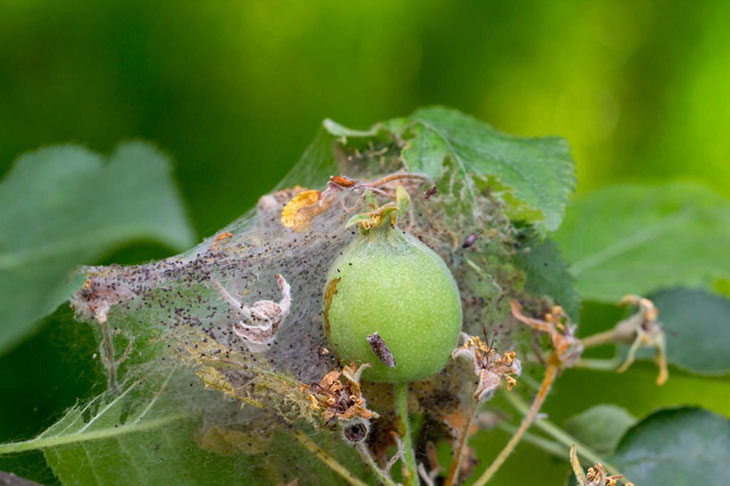
What Are Common Apple Diseases And Pests Beside Caterpillars?
There are three primary threats apart from hairy caterpillars that you must notice closely: ermine moth, coding moth, and aphid.
- The ermine moth is a small creature that stands out with its black spots on the back. It commonly induces the white web on an apple tree when spring comes.
- The codling moth has brown-gray skin. Female moths are the main culprit behind tiny holes drilled into the apple leaves.
- The aphid infestation is normally shown by the foliage malformations or leaf curl.
Is It Harmful To Use Pesticide To Eradicate Apple Tree Caterpillars?
As mentioned earlier, suppose you use the right amount of pesticide; it will help boost the apple tree’s growth and eradicate caterpillars effectively.
However, an excess amount of pesticide seems to cause more harm than good due to its high level of toxicity.
The Bottom Line
Hopefully, you can gain an all-inclusive understanding of caterpillars on apple trees after contemplating this post.
More information about the caterpillar-induced problems, along with four feasible solutions, is also explained carefully in the article.
Remember that don’t use too much fertilizer or pesticide, and your apple garden will soon yield a fruitful crop.
